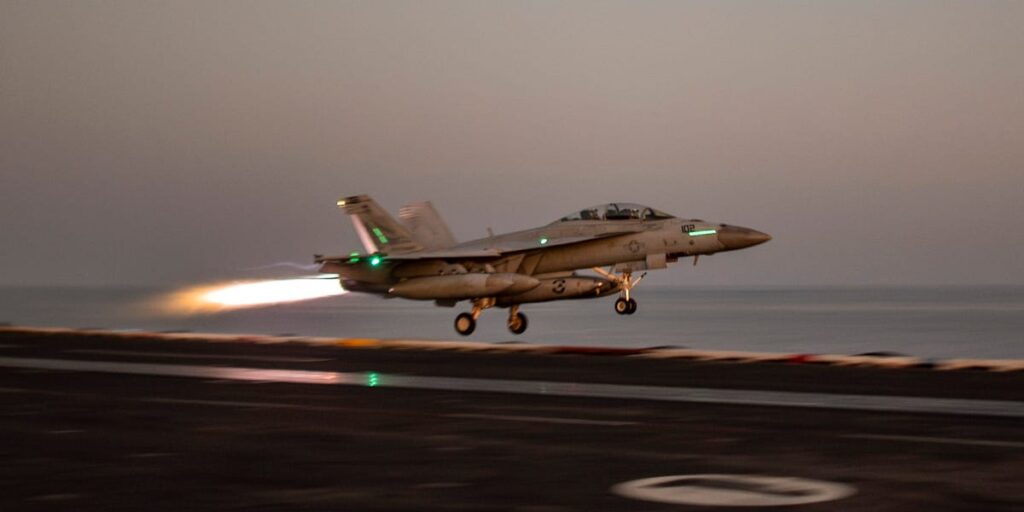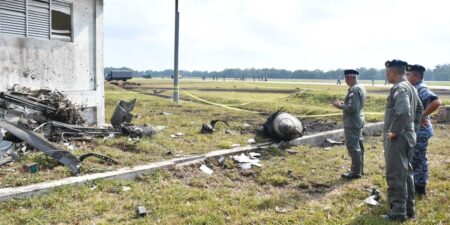The US military is bracing for possible retribution from the Iranians after American forces, including stealth bomber aircraft and a guided-missile submarine, attacked three of its main nuclear facilities over the weekend.
Abbas Araghchi, Iran’s foreign minister, said that the country “reserves all options” to defend itself. President Donald Trump has warned Tehran that any retaliation against the US will be met with more force than the initial strikes he ordered.
Whether Iran pursues retaliation remains to be seen. The bombing mission over the weekend struck at the heart of its nuclear program, making the situation potentially far more escalatory than the killing of a top Iranian general in 2020, which saw Tehran fire ballistic missiles at US forces in the Middle East in response.
The US military has a very large force presence in and around the Middle East right now, including land and naval bases that Iran could target in strikes. It also has air defense assets, such as warships and surface-to-air missile systems, that could shield forces from a retaliatory attack. Many of these assets could also be used to carry out a punitive response in the event of Iranian retaliation.
At sea
A defense official, speaking on the condition of anonymity to discuss force posture, told Business Insider on Monday that the US Navy has two carrier strike groups in the Arabian Sea.
This includes the aircraft carriers USS Carl Vinson and USS Nimitz, one cruiser, and five destroyers. Each carrier strike group has an embarked air wing consisting of dozens of fighter jets, surveillance aircraft, and helicopters.
The Vinson is one of just a few US carriers that is currently equipped with advanced, fifth-generation F-35 stealth fighter jets in its air wing. These advanced aircraft are specially designed for the Navy so they can take off from and land on the carrier.
The official said two destroyers are in the Red Sea and five more are in the nearby eastern Mediterranean Sea. The aircraft carrier USS Gerald R. Ford could eventually join them. Its strike group is leaving Virginia on Tuesday for a regularly scheduled deployment to Europe, but it is available to be retasked.
As of Saturday, a guided-missile submarine was at an undisclosed location in the Middle East, as it participated in the strikes on Iranian nuclear sites. The official declined to say if it was still there.
On land
The US has around 40,000 troops stationed throughout the Middle East, serving at major military installations in countries such as Bahrain, Qatar, Saudi Arabia, Kuwait, and the United Arab Emirates.
There are concerns that Iran may choose to target US bases or smaller military outposts, which would not be unprecedented. After a US drone strike eliminated Quds Force commander Qassem Soleimani in 2020, Tehran retaliated by launching missiles at American forces in Iraq.
Gen. Dan Caine, the chairman of the Joint Chiefs of Staff, said the US had elevated force protection measures across the Middle East before the weekend strikes on Iran’s nuclear facilities, especially in Iraq, Syria, and in the Gulf states.
“Our forces remain on high alert and are fully postured to respond to any Iranian retaliation or proxy attacks, which would be an incredibly poor choice,” Caine told reporters on Sunday.
He said the US will defend itself, adding that “the safety of our service members and civilians remains our highest priority.”
The US military has multiple MIM-104 Patriot surface-to-air missile batteries and at least one Terminal High Altitude Area Defense — or THAAD — system in the Middle East. These can be used to intercept Iranian ballistic missiles.
A US official told BI last week that the US military has provided both land- and sea-based air defense for Israel since the country started its strikes on Iranian nuclear and military facilities on June 13. It’s unclear how many Iranian retaliatory missiles American forces have intercepted.
In the air
The US Air Force has a range of aircraft in the Middle East, including fourth- and fifth-generation fighter jets, strike drones, and refueling tankers.
After Israel began its bombing campaign earlier this month, but prior to the US joining over the weekend, Reuters reported that additional F-16, F-22, and F-35 fighter jets had deployed to American bases. A-10 attack aircraft and F-15s are also in the region.
The Pentagon declined to provide a rundown of the aircraft in the region, and US Central Command, which oversees American military operations in the Middle East, did not immediately respond to BI’s request for clarity on US assets in the region.
US fighter aircraft could shoot down Iranian attack drones launched in retaliation, as they did in April 2024 in defense of Israel. They are also capable of intercepting cruise missiles with air-to-air munitions.
Iran’s response, however, may not be limited to military actions such as launching missiles and drones. There are concerns about terror threats, and it could also opt to close the Strait of Hormuz, a major oil transit chokepoint connecting the Persian Gulf to the Indian Ocean.
On Monday, the US Embassy in Qatar warned American citizens to shelter in place until further notice, just hours before Doha closed its airspace. It’s possible that Iran could choose to retaliate against US interests in the Gulf state.
Read the full article here
















